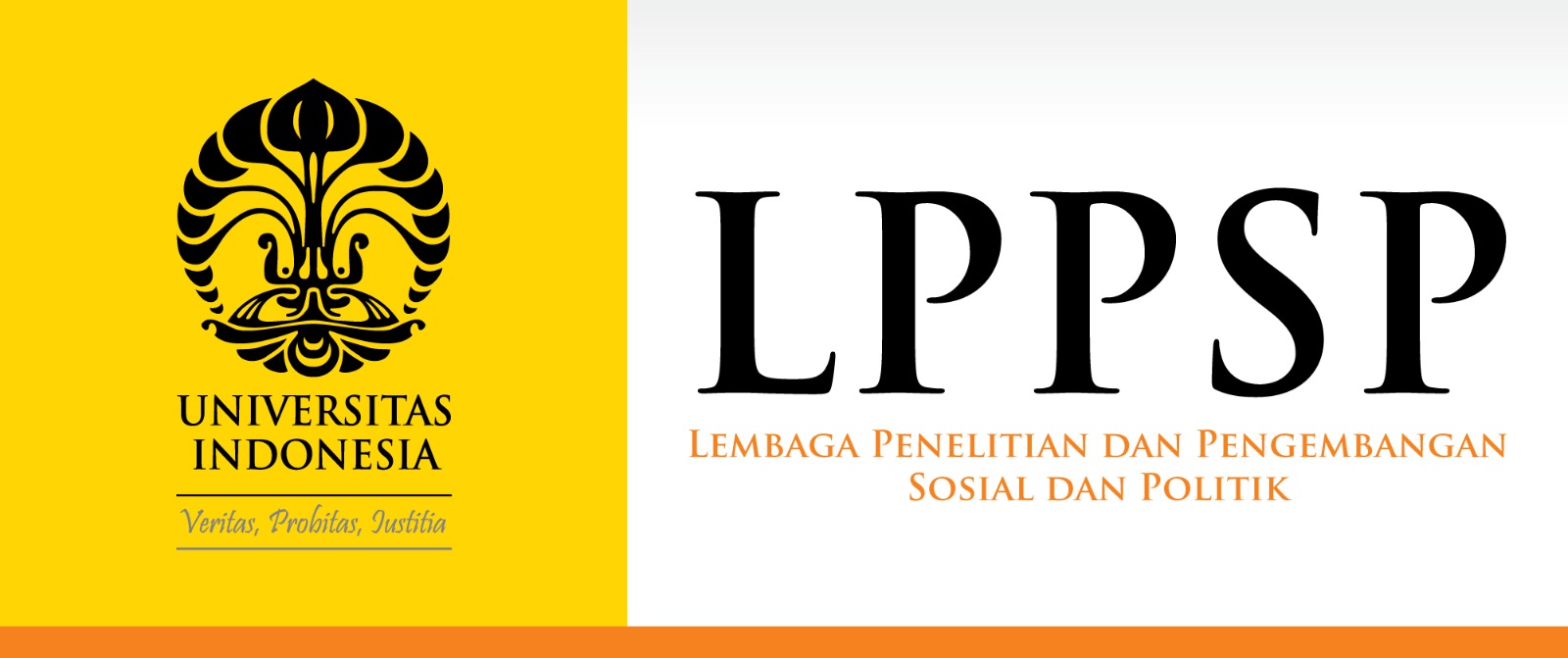JURNAL KOMUNIKASI INDONESIA
Abstract
In late 2011, Occupy Wall Street (OWS) grabbed the attention of American mass media. Media coverage on the anti-capitalist movement was mixed, some was positive and the majority was negative. Using Robert Entman’s framing theory, this paper provides a framing analysis of the OWS movement from mass media and occupiers’ media. Content analysis of news articles published by three different media platforms demonstrates that media framing of the OWS by both mass and occupiers’ media differs in terms of reporting and news focus. The difference results from the ideological streams of the three media in connection with respective political and socioeconomic interests. Despite the help of the internet that enables social movements to create alternative media for message distribution and follower mobilization, yet they are still lack of loyal fans and legitimacy. Nonetheless, alternative media such as that of the OWS are able to fight over meaning of social movement issues through the creation and dissemination of counter frames and disrupt the hegemonic power of mass media in framing social movements
References
Adi, A. (2015). Occupy PR: An Analysis of Online Media Communications of Occupy Wall Street and Occupy London. Public Relations Review, 41(4), 508–514.
Berrett, D. (2014, April 7). Intellectual Roots of Wall Street Protest Lie in Academe. Retrieved 24 October 2019, from https://web.archive.org/web/20140407092538/https://chronicle.com/article/Intellectual-Roots-of-Wall/129428/
Bray, M. (2012). Confronting the Many Men in Suits: Rethinking the ‘Positive’Coverage of Occupy W all Street. Critical Quarterly, 54(2), 5–9.
Castells, M. (2013). Communication Power. Oxford: OUP Oxford.
Chang, S. (2009). The Influence of Media Frames on the Public’s Perception of Biofuels. https://www.semanticscholar.org/paper/The-influence-of-media-frames-on-the-public's-of-Chang/19ec710f0160f2f125144ee47d67fcf35c7f8528
Chomsky, N. (2004). Language and Politics. Oakland: AK Press.
Cissel, M. (2012). Media Framing: A Comparative Content Analysis on Mainstream and Alternative News Coverage of Occupy Wall Street. The Elon Journal of Undergraduate Research in Communications, 3(1), 67–77.
Compaine, B. M., & Gomery, D. (2000). Who Owns the Media?: Competition and Concentration in the Mass Media Industry. London: Routledge.
Costanza-Chock, S. (2012). Mic Check! Media Cultures and the Occupy Movement. Social Movement Studies, 11(3–4), 375–385.
Dalotto, F. (2010). American Democracy in Jeopardy: A Nation of People Vulnerable to Being Told What to Think. New York: AuthorHouse.
DeLuca, K. M., Lawson, S., & Sun, Y. (2012). Occupy Wall Street on the Public Screens of Social Media: The Many Fframings of the Birth of a Protest Movement. Communication, Culture & Critique, 5(4), 483–509.
Douai, A., & Wu, T. (2014). News as Business: The Global Financial Crisis and Occupy Movement in the Wall Street Journal. The Journal of International Communication, 20(2), 148–167.
Duyvendak, J. W., & Jasper, J. M. (2015). Players and Arenas: The Interactive Dynamics of Protest. Amsterdam: Amsterdam University Press.
Entman, R. M. (1993). Framing: Toward Clarification of a Fractured Paradigm. Journal of Communication, 43(4), 51–58.
Entman, R. M. (2004). Projections of Power: Framing News, Public Opinion, and US Foreign Policy. Chicago: University of Chicago Press.
Gaby, S. & Caren, N. (2016). The Rise of Inequality: How Social Movements Shape Discursive Fields. Mobilization: An International Quarterly, 21 (4), 413–429.
Gallup. (2011, November 21). Support for ‘Occupy’ Unchanged, but More Criticize Approach. Retrieved 23 October 2019, from Gallup.com website: https://news.gallup.com/poll/150896/Support-Occupy-Unchanged-Criticize-Approach.aspx
Gamson, W. A., & Wolfsfeld, G. (1993). Movements and Media as Interacting Dystems. The Annals of the American Academy of Political and Social Science, 528(1), 114–125.
Gitlin, T. (2003). The Whole World is Watching: Mass Media in the Making and Unmaking of the New Left. Berkeley : Univ of California Press.
Gleason, B. (2013). # Occupy Wall Street: Exploring Informal Learning about a Social Movement on Twitter. American Behavioral Scientist, 57(7), 966–982.
Goffman, E. (1974). Frame Analysis: An Essay on the Oorganization of Experience. Cambridge, MA: Harvard University Press.
Kavada, A. (2015a). Creating the Collective: Social Media, the Occupy Movement and its Constitution as a Collective Actor. Information, Communication & Society, 18(8), 872–886.
_________. (2015b). Social Movements and Media Representation: The Case of Occupy. Retrieved from http://www.bfi.org.uk/sites/bfi.org.uk/files/downloads/social-movements-and-media-representation-the-case-of-occupy-2015-07.pdf
Krieg, Gregory. (2016). Occupy Wall Street Rises Up for Sanders. CNN, April 13. Accessed October 12, 2019. Retrieved from http://www.cnn.com/2016/04/13/politics/occupy-wall-street-bernie-sanders-new-york-primary/index.html.
Lenzner, B. (2014). The Emergence of Occupy Wall Street and Digital Video Ppractices: Tim Pool, Live Streaming and Experimentations in Citizen Kournalism. Studies in Documentary Film, 8(3), 251–266.
Leonhardt, M. (2016). The Lasting Effects of Occupy Wall Street, Five Years Later. Money, September 16. Accessed June 21, 2019. Retrieved from http://time.com/money/4495707/occupy-wall-street-anniversaryeffects/.
Levitin, M. (2015). The Triumph of Occupy Wall Street. The Atlantic October 6, 2015. Accessed June 21, 2019. Retrieved from
http://www.theatlantic.com/politics/archive/2015/06/the-triumph-of-occupy-wall-street/395408/.
Lutz, A. (2012). These 6 Corporations Control 90% Of The Media In America. Retrieved 24 October 2019, from https://www.businessinsider.com/these-6-corporations-control-90-of-the-media-in-america-2012-6?IR=T
Mahayasa, D. P. S. (2016). Kegagalan Imitasi Strategi Global: Kasus Gerakan Occupy Jakarta. Journal of Integrative International Relations, 1(1).
Mielczarek, N. (2018). The “Pepper-Spraying Cop” Icon and Its Internet Memes: Social Justice and Public Shaming Through Rhetorical Transformation in Digital Culture. Visual Communication Quarterly, 25(2), 67–81.
Milkman, R., Luce, S. & Lewis, P. (2013). Changing the Subject: A Bottom-Up Account of Occupy Wall Street in New York City. New York: The Murphy Institute, CUNY.
Moore, T. (2017). The Transformation of the Occusphere. Social Identities, 23(6), 674–687.
Negus, A. S. (2012). Occupy Wall Street in Alternative and Mainstream Media: A Comparative Analysis of the Social Movement’s Framing in the Media. https://www.semanticscholar.org/paper/Occupy-Wall-Street-in-alternative-and-mainstream-%3A-Negus/6f3787a1283929a8b1893e964734e7a128707afb
Noam, E. (2009). Media Ownership and Concentration in America. Oxford: Oxford University Press.
Noam, E. M. (Ed.). (2016). Who Owns the World's Media?: Media Concentration and Ownership around the World. Oxford:Oxford University Press.
OccupyWallStreet. (2011). About Us | OccupyWallSt.org. Retrieved 24 October 2019, from http://occupywallst.org/about/
Penney, J., & Dadas, C. (2014). (Re) Tweeting in the service of protest: Digital composition and circulation in the Occupy Wall Street movement. New Media & Society, 16(1), 74–90.
Rauch, J., Chitrapu, S., Eastman, S. T., Evans, J. C., Paine, C., & Mwesige, P. (2007). From Seattle 1999 to New York 2004: A Longitudinal Analysis of Journalistic Framing of the Movement for Democratic Globalization. Social Movement Studies, 6(2), 131-145.
Romanos, E. (2016). Immigrants as Brokers: Dialogical Diffusion from Spanish Indignados to Occupy Wall Street. Social Movement Studies, 15(3), 247–262.
Shah, A. (2009). Media Conglomerates, Mergers, Concentration of Ownership. Retrieved 24 October 2019, from Global Issues website: http://www.globalissues.org/article/159/media-conglomerates-mergers-concentration-of-ownership
Statista. (2019). Listening to the Radio Weekly in the U.S. by age 2018. Retrieved 24 October 2019, from Statista website: https://www.statista.com/statistics/1011051/consumers-listening-to-radio-weekly-by-age/
Steinebach, S. (2013). Today we Occupy the Plantation–Tomorrow Jakarta: Indigeneity, Land and Oil Palm Plantations in Jambi. Adat and Indigeneity in Indonesia, 7, 63–79.
Strauss, C. (2018). Engaged by the Spectacle of Protest: How Bystanders Became Invested in Strauss, C & Friedman, J. R. (eds), Occupy Wall Street. In Political Sentiments and Social Movements (pp. 33–60). London: Palgrave Macmillan.
Suryahadi, A., Al Izzati, R., & Suryadarma, D. (2018). The Causes and Consequences of Increasing Inequality in Indonesia: A Long Term View. Jakarta: The SMERU Research Institute.
Tapsell, R. (2015a). Platform Convergence in Indonesia: Challenges and Opportunities for Media Freedom. Convergence, 21(2), 182-197.
________. (2015b). Indonesia's Media O
Recommended Citation
Saputra, Muhammad Beni
(2019)
"Fighting over Meaning: Occupy Wall Street in American Mass Media and Occupiers’ Media,"
JURNAL KOMUNIKASI INDONESIA: Vol. 8:
No.
2, Article 2.
DOI: 10.7454/jki.v8i2.11105
Available at:
https://scholarhub.ui.ac.id/jkmi/vol8/iss2/2
Included in
Gender, Race, Sexuality, and Ethnicity in Communication Commons, International and Intercultural Communication Commons, Social Influence and Political Communication Commons




